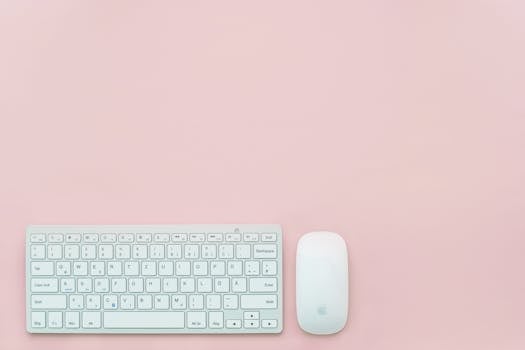Make it Clean and Simple
Maintaining simplicity and cleanliness in design, communication, and everyday choices has become an essential practice for those seeking clarity in an increasingly cluttered world. The concept revolves around stripping away excess, focusing on what truly matters, and presenting it in a way that resonates without Whether applied to a product, workspace, or even lifestyle, the idea of keeping things clean and simple brings both efficiency and satisfaction.
This approach is not about minimalism for the sake of minimalism; instead, it's about creating a balance that prioritizes functionality while reducing distractions. Focusing on essential elements enables individuals and organizations to enhance their productivity, improve user experience, and create environments that are both aesthetically pleasing and highly effective.
Design with Purpose
Good design is rooted in purpose. No matter if it’s a website, an app design, or a physical product, having clear communication is crucial for effectively expressing the intended message or function. Overcomplicated designs often leave users frustrated and confused. Thoughtfully crafted layouts with intuitive navigation contribute to positive experiences by streamlining interactions and enhancing user engagement.
- Minimize visual clutter in your design by integrating ample negative space.
- Stick to a cohesive color palette to maintain consistency.
- Utilize clear typography to enhance readability.
Apple’s products are widely recognized for their simplicity in design. Their focus on sleek aesthetics and user-friendly interfaces exemplifies how clean design can drive both usability and consumer loyalty.
Streamline Communication
Clear communication is crucial in personal and professional settings. Overloading discussions or written content with excessive details can weaken the main message. Instead, focus on conveying ideas succinctly while maintaining depth where needed. This principle is especially important in marketing materials or presentations where attention spans are limited.
Avoid jargon unless it's relevant to your audience's expertise. Business leaders often rely on clear summaries rather than dense reports to make informed decisions quickly. A well-organized email or presentation that presents important information clearly from the start can help streamline communication and prompt immediate responses.

Decluttering Spaces
The environment we inhabit significantly influences our mental state. A clutter-free space promotes focus, creativity, and relaxation. Adopting a simple and uncluttered design in your home or workplace enhances both the aesthetic appeal and functional efficiency of the space.
- Arrange your belongings into distinct categories to make sure that each item is properly situated.
- Dispose of or donate unused belongings regularly.
- Incorporate multifunctional furniture for efficiency in smaller spaces.
Marie Kondo's method of decluttering has gained considerable attention by encouraging individuals to keep only the items that truly spark joy in their lives. This approach creates an environment that is both better organized and exudes a sense of positivity and purpose.
Simplify Decision-Making
Simplifying choices can reduce decision fatigue, a phenomenon where making too many decisions drains mental energy. This principle can be applied to various aspects of life, from daily routines to professional strategies.
- Create routines to minimize trivial decisions (e.g., meal planning).
- Enhance your decision-making process by setting clear criteria before finalizing your choices.
- Automate recurring tasks like bill payments or subscriptions.
A notable example comes from former President Barack Obama, who reportedly limited his wardrobe choices to minimize decision fatigue during his tenure. Such practices illustrate how simplifying even minor aspects of life can lead to greater overall efficiency.
The Benefits of Clean & Simple Living
Adopting this mindset extends beyond aesthetics or productivity, it impacts well-being too. Adopting a more minimalist way of living enhances mindfulness by allowing individuals to focus on what genuinely matters, while liberating them from unnecessary distractions. This doesn't mean eliminating all luxuries but rather curating them carefully for maximum enjoyment without excess.
Recent research suggests that individuals residing in well-structured environments experience reduced stress levels when compared to those who find themselves in disorganized settings.apa.org). Companies practicing simplicity in their workflows often see improved team morale and efficiency due to reduced complexity in processes (forbes.com).
Simplicity aligns with sustainability goals by promoting thoughtful buying habits; choosing to acquire fewer, well-made products not only reduces long-term waste but also fosters a greater appreciation for the items we already own.
A commitment to keeping things clean and simple fosters clarity across all areas of life, from how we work to how we live daily. Focusing on what truly matters and making deliberate design decisions allows individuals to craft spaces and systems that uplift rather than burden. It's not just about decluttering physical spaces; it's a mindset shift that encourages intentionality at every level. When we concentrate on the essentials, we create opportunities for deeper connections and enriching experiences in all aspects of life.